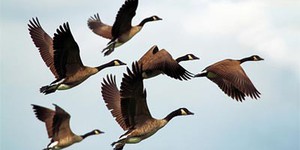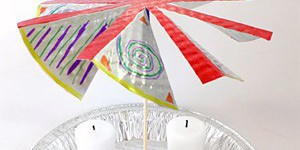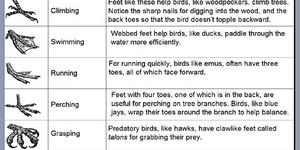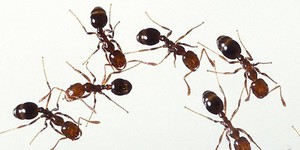Others Like “With a Little Bread as Bait, Can You Make a Bird Migrate?” (top 20 results)
|
In the wild there are two types of animals: the hunters and the hunted. A good predator is always on the prowl for fresh prey. What can an animal do to stay off of the menu? Some animals have evolved to use a variety of camouflage tactics so they can fool their predators and increase their chances of survival. In this science project, you will be the hungry predator hunting for M&M® prey. But it may not be as easy as it sounds — some of your prey will be camouflaged. Will they be…
Read more
Extinct might be a word you associate with animals that lived long ago, like the dinosaurs, but did you know that over 18,000 species are classified as "threatened" (susceptible to extinction) today? Scientists involved in wildlife conservation have a tough job; they are in charge of determining what needs to be done to prevent a species from becoming extinct. Habitat, food supply, and impacts of local human populations are just a few of the factors these scientists take into account. It is a…
Read more
Have you ever seen a baby in the park and wondered if it was a boy or a girl? Maybe once you found out the gender, you thought how sweet, mischievous, or cute the baby was. But wait…do you think that the words you used to describe the baby might be based on your own gender stereotypes? A gender stereotype is when you expect someone to act a certain way simply because he or she is a boy or a girl. In this human behavior science project, you will investigate whether young children use gender…
Read more
Jumping discs can be a fun toy to play with, and with their sudden POP!, they can even be a good way to startle people who have never heard them before. Jumping discs use a neat trick to jump. They are made of two different types of metal, and these metals expand when they heat up (or shrink when they cool down), but not by exactly the same amount. In this science project you will explore how temperature affects the reactions of your jumping discs— and how to get the timing right if you…
Read more
Have you ever ridden on a carousel, or a merry-go-round, at an amusement park? On a carousel, you usually get to take a seat on a wooden horse or other animal that spins around and around as the carousel is turned on and powered by electricity. Another smaller type of carousel that people can have in their homes is a candle carousel, which is powered by heat from candles. In this science project, you will get to make your own candle carousel and investigate how the spinning speed of the…
Read more
Many things in nature are periodic: the seasons of the year, the phases of the moon, the vibration of a violin string, and the beating of the human heart. In each of these cases, the events occur in repeated cycles, or periods. In this project, you will investigate the periodic motion of a spring, using a mini Slinky®. You can also measure the motion of your spring using a smartphone equipped with a sensor app. Basic physics will then allow you to determine the Hooke's Law spring constant.…
Read more
Have you ever seen a skateboarder jump over an obstacle or slide down a railing? It looks like they are defying the laws of physics when they perform these tricks. It looks like it, but that's not the case. Physics describes the motion of objects and it is a skateboarder's best friend! All of these tricks can be explained by physics. In this sports science fair project, you will learn how speed affects "popping an ollie." The ollie is a basic skateboarding trick, and it's the first step to more…
Read more
On a windy day it is hard to keep your hat on! The power of the wind can even be strong enough to power large wind turbines to make electricity! In this experiment, find out how you can make your own instrument to measure the speed and power of the wind. How does it work?
Read more
Animals survive in all sorts of extreme environments, whether it is a polar bear out and about when it is -40°F, a desert iguana trying to find food as the temperature rises to 110°F, or a deep sea anglerfish living 3281 feet down into the sea. How do they do it? The answer is adaptations! Their bodies have special features that allow them to live in those environments. You might not be able to dive down 3281 feet to observe the deep sea anglerfish, but in this science fair project you…
Read more
Have you ever wondered what a wildlife biologist does? Ronnie and Denise from DragonflyTV found out firsthand when they worked with a local wildlife biologist to take a survey of the fish populations in their local lake. They wanted to determine what the biodiversity (number of different species in a habitat) was like so that they could find out how healthy the lake habitat was. In this science fair project you can take on the role of a wildlife biologist by examining the biodiversity of…
Read more
|
Explore Our Science Videos
How to Assemble Your BlueBot Chassis
Basic Circuits Kit: Conductors and Insulators
Balloon car lesson plan














